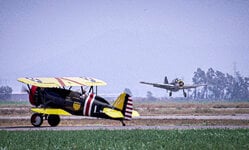The Tiger was never supposed to be a general issue tank.
A better comparison but still very flawed would be the Tiger vs M6 or Tiger vs M-26.
And economics of production has lot to do with initial orders or production schedule. The Germany army only asked for (paid for) a delivery rate of 25 tanks per month. Took a while for that to be changed. If they had asked for 75 per month and tooled up (and hired manpower) accordingly the price would have come down, at least a little
IIRC I read somewhere that for the Tiger I production, on average for every sixth vehicle produced they made some tweak. Slowing down the production rate and making maintenance a nightmare.
The Tiger was intended for breaking through fortified positions. Not even for exploiting the break through, that would be done by the MK IIIs and MK IVs.
The Germans built over 5500 MK IVs from Aug 1943 to the end of the war, they stopped making Tiger Is in Aug 1944.
The Whole Tiger vs Sherman thing is a distraction from what was going on and is a real mix up of the quality over quantity thing.
Even if you include total Pz IV production (8500), Pz III production (5800), Panther (6000), the Germans were hopelessly outnumbered by Sherman (50k) and T-34 (84k) production (+ other Allied tanks).

